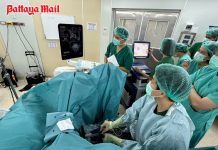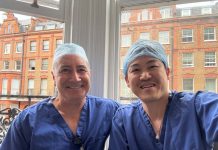We all have plenty of worries and anxieties. However, some of these fears and phobias are not necessarily based on true science. ‘Pseudo-science’ does not cut it, as far as I am concerned. Try this one for starters – an Australian Institute of Health and Welfare report just released shows the number of new cancer cases grew from 66,000 in 1991 to 114,000 in 2009 and about 121,000 Australians are expected to be diagnosed with cancer this year.
There you are! Cancer rates almost double! Why? Is it Aussie pies? Or heaven help me – I hope it’s not the beer!
Now back to some real science/mathematics/statistics: the increase in the number of cancer diagnoses is partly explained by the ageing and increasing size of the population. Other factors had contributed to the apparent increase as well. Wider availability of testing and screening had played a role. In other words, we were getting more clever with our ‘looking’, so obviously found more. This, of course, does not mean that the death rates from cancer are significantly greater. Of the prostate cancer diagnoses, the vast majority of males will die with the condition, and not from the condition!
Now you can see that we were not comparing cancer “rates”, we were just comparing cancer numbers, which is not something that can be used as a statistical pointer, unless there is standardization in other factors, such as population size for example.
However, when these numbers were looked at with a scientific eye, and looking at all cancers combined, the age-standardized mortality rate decreased from 210 per 100,000 people to 174 per 100,000 people between 1991 and 2010. Now that is statistically significant.
Furthermore, Five Year Survival Rates rose from 47 percent in 1982-1987 to 66 percent in 2006-2010. Once again, those are significant gains, with the largest being in prostate cancer, kidney cancer and non-Hodgkin’s lymphoma. But improvements in survival rates were more modest in mesothelioma, brain cancer, pancreatic cancer and lung cancer.
Now I often get asked whether I take multivitamins or magic herbs or other additional dietary fad compounds. I don’t! I want you to think critically for a moment, it is very difficult to ‘prove’ that by taking the shredded root of some Outer Mongolian herb or similar items, that ‘something’ (usually cancer) does not happen. Even more outrageous are the claims that some herb, poppy or whatnot can actually ‘cure’ cancers. Is it all just poppycock?
To be able to prove these claims needs medical science to look at a large group, or population, and compare the cancer experience with another similar large group or population. Ideally, the two groups are matched for age/sex/ethnicity/working environment, location, etc. You get no worthwhile results comparing Welsh coalminers with urban Africans, for example, to go to extremes. That is real apples and oranges.
Results of a 15+ year study in Australia were presented at the CSIRO Prospects for Cancer Prevention Symposium. The findings emerged from the Cancer Council’s Melbourne Collaborative Cohort Study, an ongoing research project involving 42,000 Australians who have been monitored since 1990.
Looking at the dietary habits and the cancer connection, Dr Peter Clifton, director of the CSIRO’s Nutrition Clinic, said there was “zero evidence” that eating fruit and vegetables could protect against cancer. The nutritionists and the healthy eating proponents were shattered. However, this to me is a much more compelling argument than something that comes from folklore, or the lady next door who swears by it. You are looking at the results from a study of 42,000 adults.
What the survey did show was that the three prime risk factors as far as predicting cancers were concerned were identified as obesity, drinking too much alcohol and smoking.
Staying within a healthy body weight range was found to be more important than following particular nutritional guidelines. This means a thin person who does not eat enough fruit and vegetables would have a lower risk of developing cancer than someone who is overweight but eats the recommended daily amount of fruit and five colors of vegetables.
So, will the big C get you? Remain at a correct weight and don’t smoke, and enjoy alcohol in moderation. (I do!)




